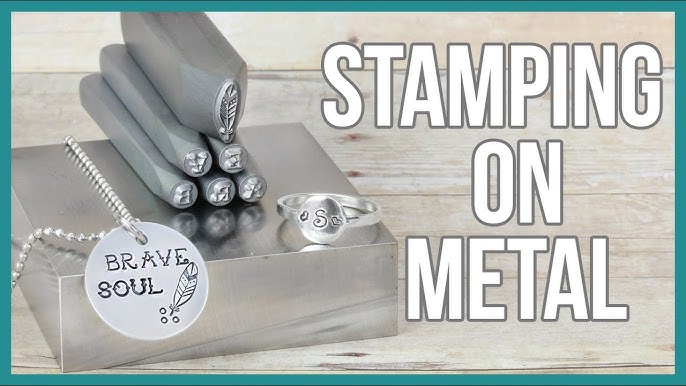Steel Stamping Innovations: Elevating Manufacturing Processes for Superior Outcomes
In the world of manufacturing processes, steel marking has long been a foundation method for producing a selection of accuracy components. With the unrelenting march of technical innovation, the landscape of metal marking is going through a substantial improvement.
Development of Steel Stamping Methods

In addition, improvements in product scientific research have actually caused the development of high-strength alloys that can currently be perfectly marked into detailed forms, dealing with a broader series of commercial applications. The assimilation of robotics and expert system has actually better optimized the stamping procedure by boosting speed and accuracy while decreasing the danger of human mistake.

Effect of Advanced Materials
Have innovative products changed steel marking procedures considerably in the production industry? By utilizing materials such as high-strength alloys, advanced composites, and ingenious finishings, steel marking procedures can now generate elements that are lighter, stronger, and much more sturdy than ever previously.
These innovative products supply superior mechanical residential or commercial properties, rust resistance, and thermal security, enabling manufacturers to satisfy the needs of modern markets such as aerospace, auto, and electronics. In addition, making use of innovative materials in steel stamping has facilitated the production of complicated geometries and elaborate layouts that were previously unattainable through standard approaches.
Furthermore, the application of advanced materials has actually resulted in decreased material waste, reduced production prices, and shorter preparations, making metal marking processes much more economical and lasting. As modern technology remains to advance, the effect of innovative materials on metal marking processes is expected to drive additional technology and boost the competitiveness of manufacturers in the global market.
Automation in Metal Stamping
The advancement of steel stamping processes driven by the integration of advanced products has actually established the stage for considerable innovations in automation within the production sector. Automation in metal stamping has transformed manufacturing procedures, enhancing performance, accuracy, and overall outcome quality. Via the utilization of robotics, sensing units, and computer-controlled systems, tasks that were as soon as hand-operated and taxing can currently be executed with unmatched rate and accuracy.
Automation in metal stamping not only speeds up production rates however also makes certain uniformity in the manufacturing procedure. By decreasing human intervention, the threat of mistakes is considerably decreased, leading to greater levels of product harmony and integrity. In addition, automation enables suppliers to carry out intricate stamping jobs that would certainly be unwise or tough to accomplish by hand.
Moreover, automation in steel stamping adds to a much safer working setting by decreasing the demand for employees to take part in unsafe or repetitive jobs - Metal Stamping. This change towards automation not only boosts productivity but likewise leads the way for the future of production, you could check here where modern technology plays a central role in driving operational excellence
Quality Assurance and Assessment Solutions
With an emphasis on precision and integrity, quality assurance and evaluation systems play an essential function in ensuring item quality in steel stamping procedures. These systems are created to keep an eye on every stage of manufacturing, from material inspection to the last item, to guarantee that all components fulfill the required criteria. By carrying out sophisticated modern technologies such as optical assessment systems, coordinate measuring makers (CMM), and automated gauging equipment, manufacturers can identify even the smallest discrepancies in measurements, surface area high quality, and general integrity of stamped parts.

Sustainability Practices in Steel Stamping
Structure upon the foundation of accuracy and reliability developed through top quality control and evaluation systems, the integration of sustainable methods in metal stamping procedures is progressively ending up being a prime focus for makers seeking to minimize ecological effect and enhance resource utilization. Sustainability methods in metal stamping include visit this web-site a series of campaigns targeted at lowering waste generation, power consumption, and greenhouse gas discharges throughout the production process.
One trick element of sustainability in metal marking is the fostering of eco-friendly materials and technologies that promote recyclability and waste reduction. By utilizing recycled materials and implementing energy-efficient equipment, suppliers can lower their carbon footprint and add to a more sustainable production cycle. Furthermore, enhancing production procedures to decrease product waste and energy use not just benefits the setting but also brings about cost financial savings for companies in the future.
In addition, the implementation of sustainable practices in steel marking can boost brand name track record and attract environmentally conscious consumers. As sustainability continues to get relevance in the production sector, integrating eco-friendly efforts into metal stamping procedures is necessary for lasting success and competitiveness out there.
Conclusion
In final thought, steel marking strategies have actually considerably progressed in time, incorporating sophisticated products and automation to boost making procedures. Quality control and examination websites systems play a crucial duty in ensuring remarkable outcomes, while sustainability techniques are increasingly being applied to decrease environmental influence. These innovations in steel stamping have revolutionized the market, leading to a lot more efficient and lasting manufacturing approaches for various sectors.
Steel stamping, when a manual and labor-intensive procedure, has actually transformed into an extremely automated and advanced method of forming metal sheets into numerous kinds and layouts.Have sophisticated materials changed metal stamping processes dramatically in the production sector? By making use of materials such as high-strength alloys, progressed compounds, and cutting-edge coatings, metal stamping procedures can now generate components that are lighter, more powerful, and much more long lasting than ever before.
The advancement of metal marking procedures driven by the integration of sophisticated materials has established the phase for considerable improvements in automation within the production industry.In conclusion, metal stamping techniques have actually considerably developed over time, integrating sophisticated materials and automation to improve manufacturing processes.